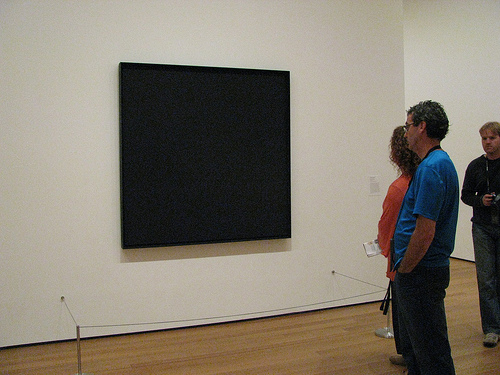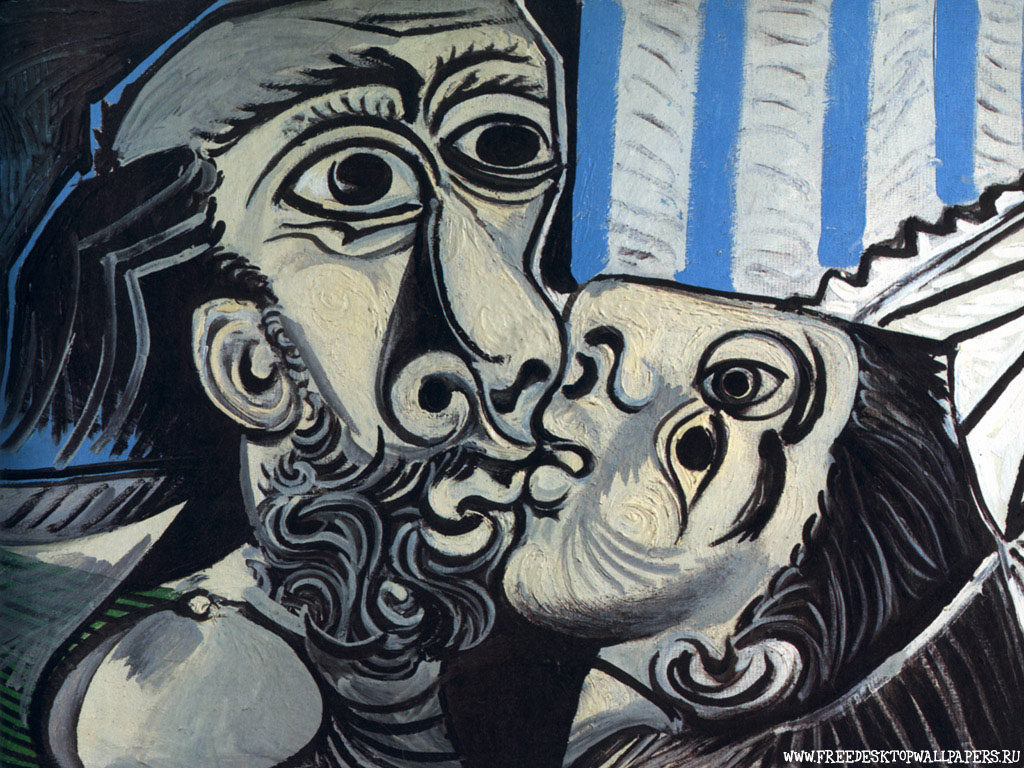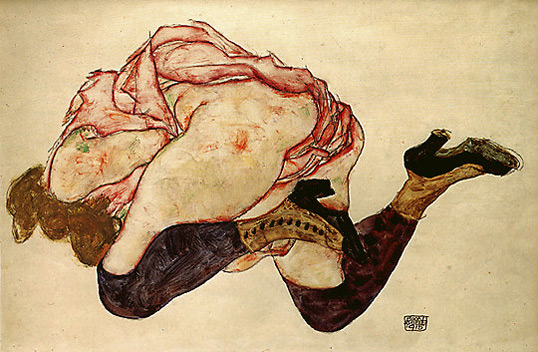I have long thought that “post-modern” (and maybe even “modern”) art is a load of crock, camouflage for the untalented to pretend their talent. It started, of course, with the post-WWI Dadaists (who were really nihilists) and really took off with Marcel Duchamps (may his current body/spirit temperature be set to “BROIL” for all eternity). I mean, seriously?

Now comes this article, which looks at post-modernism’s more deadly aims:
If wisdom begins with the definition of terms, what do you call efforts to deliberately lie about what those definitions actually are? The manipulation of our shared understanding is too calculated to be merely inept; too consistent to be ascribed to simple ignorance; too debased to be just misguided. There is strategy here, relentlessly advanced and ferociously enforced.
Misdirection is at the core of the whole rotten Postmodern gambit. “Who is there among you, who, if his son. asks him for bread, will give him a stone?” The contemporary technocratic managerial class, that’s who. Our culture is saturated with globalist diktats that that are fundamentally at odds with reality. They not only give us stones for bread, they give us leftist activism in place of art, and tell us to swallow it.
Quite right. I’ve studied Art Appreciation quite thoroughly — because Art had always been a hole in my store of knowledge as a younger man, I had to fill it — but try as I may, I could not “get” Modern or Post-Modern Art. When a piece has to be “explained” as to its meaning or direction by either the artist or an “expert” (who may be completely wrong, by the way), I think it’s essentially meaningless. Or, if the interpretation of the work is completely in the eye of the beholder, it’s equally meaningless — it’s a blank page, in other words. (The gallery pic above is therefore quite instructive, in this regard.)
I make a clear distinction between these schools of art and Impressionism, by the way, because at their worst, Impressionist paintings gave you an insight into the artist’s view of the world, even though that view might have been disturbing (hello, Picasso):

But modernist / post-modernist art is nothing like that. Instead, we’re treated to the chaotic randomness of, for instance, Jackson Pollock:

…which tells us absolutely nothing, about anything.
I can live with some of the Modernists like Egon Schiele:

…and ditto the modern Impressionists, like Leonid Afremov:

(That’s his Winter Sun, and it’s hanging on my wall as we speak.)
But the whole school of Post-Modernism screams “FAKE!” at me, every time I see it, and the attempt to redefine terms — as the author explains in the above article — likewise revolts me, and I’m calling bullshit on the whole thing.
It’s not art; it’s anti-art. And a pox on them for their attempts to redefine and, ultimately, to destroy beauty.

Post modern artists, or, more properly, their promoters, are very great and very effective confidence tricksters.
For that I admire them greatly, for it is immoral to let a sucker keep his money.
Every animal and every society needs parasites to keep immune systems tuned up.
Besides, often it’s funny. When wife and I travel, and we do so a lot now we’re mostly retired, we hit museums and always make a point of getting into at least one for “modern” art, or sometimes a modern section of a proper museum.
We just did the Hermitage museum’s Amsterdam branch and went through a section of hilarious kaack called “Outsider Art”. A few years ago we did MACBA in Barcelona, which was kaack from top to bottom. Reading the absurd descriptions printed up by the museums and eavesdropping on the public was fun. We play a game of “Con-man or Rube” in analyzing what we see and hear. Mostly Rubes I fear.
I am so looking forward to the Tate Modern in the fall. http://www.tate.org.uk/art/artists/anish-kapoor-1384
As a Conservative, who is also an artist, that has painted many abstract multi/mixed media pieces, I have often pondered the value of abstract nihilistic art. I do not consider myself nihilistic, (certainly jaded) but have always visually enjoyed the juxtaposition of color and texture with abstract and figurative motifs.
So most of the time, I kind of get the attraction of the nihilistic abstract genre for “elite Art-lovers” on both a visceral and intellectual level, but any residual kinsmanship is sorely taxed by the pretension/demagoguery and the highjacking of art in general by the bankrupt elitist ideologues.
Two years ago my wife and I joined other family members in Dallas and visited the DMA – Jackson Pollock Exhibit which was kind of interesting. It seems as if Pollock would use huge long strips of primed canvas like drop cloths to drip lots of colors in various patterns and then when they dried cut individual (paintings?) that were then framed. I did notice that as the years progressed and alcohol did it’s thing in his brain his drippy stuff changed, I guess he had some organization to his splatters but I think salesmanship was his forte and now that stuff seems, to me, to have a market value way beyond its artistic merit.
The Old Guitarist Picasso painting at the Art Institute in Chicago is one of my favorites, expressive and the viewer can feel an emotion looking at it. And I have seen a lot of real strange crap over the years visiting various museums and galleries. Perhaps the strangest collection was in Aspen two years ago when I saw some pieces of rope tied in knots mixed in with junk that could have come out of a drawer in my garage painted in camo colors. Beats the crap out of me.
The great Tom Wolfe nailed much of Moderne Art in “The Painted Word”, especially in what he called the Apache dance- the attempt to be both the avant-garde Bohemian rebel working to epater la Bourgeoisie, and yet, gain oodles of wealth and fame by kissing up to the rich and powerful.
Here here.
Although art must needs develop and change (think how drab it would be if we were still stuck in the era of Etruscan pottery), not all change was for the better.
My Mother had a hole in her education, so made a bit of a study of Art. She was convinced that Picasso knew how to paint artworks, but was happy enough to do his modern stuff because of a better economic return. As a rebellious teenager I hung a print of Picasso in my room(Something with a mandolin), but then I was young and foolish.
Then came our great socialist Prime minister Gough Whitlam, who decided that Australian needed an iconic piece of art, so the Nation bought a Pollock. Can we sell it back to you, please?
The thing about art is that it is easy to denigrate aspects of it. All art is based on personal emotive preference. One may feel more emotionally invested in figurative than abstract and vice-a-versa. Conservatives on a whole, IMO, tend to the figurative.
Personally, I tend to like most art, except the political. Even though, I understand the political, it makes me want to vomit. It becomes a contest to see who can be the most nihilisticially offensive. Especially, so-called-art that loves to shock, ie, urine, feces, anti-religious, (almost always christian), bodily fluids, etc.
I mean it is so weak-minded and pretentious for someone to actually think that putting a cross in a vat of their urine is groundbreaking art, and that others affirm the ridiculousness is even worse.
Most of it is garbage; but most art is garbage (I say that as a more or less ex-artist). It can take 100 years to sort out what is and is not garbage, and possibly longer than that. There can also be whole artistic movements that are later rightfully ignored and whole periods of time with no great artist, there is no requirement that there be actually great working artist at any given moment.
My personal guess is that there may be a one or two that end up being an exception, but most of the post-modern movement will end up being trashed. It is really about politics not art, so as soon as the political point is no longer remembered the pieces themselves will have no value.
I say that separately from non-representational or realist art per se, which can be fine and many of my favorites fall into that realm. I particularly like some of the expressionists; https://en.wikipedia.org/wiki/August_Macke and https://en.wikipedia.org/wiki/Albert_Bloch for example.
I can stand impressionists, provided that I don’t feel as if they are trying to do an Andy Warhol on me, by convincing me that what they are doing is actual are, when they really know that it is crap.
His stuff was nothing but a big finger in the face to many people, I am afraid.
Art can certainly be shocking, and still have value, whether or not I appreciate it. I am not so self centered that I think that my opinion has any use beyond my own mind. However, I feel as if an artist is not actually expressing anything when they do something that anyone can do. Such as a blank canvas, or a bunch of paint splatters on the wall.
You mentioned Picasso, and he is one that I could never hope to copy his work, but I don’t always understand it either. That may be the most important part of his work. He was able to create art that begs the audience to try and understand, and sometimes they do, and sometimes they don’t, but at least it inspires some kind of thought or feeling.
My taste is not limited to the Kinkade collection or a basket of fruit. I actually find actual art to be enjoyable and stimulating, but I am also the type who either likes something or hates it. By the way, the Kinkade stuff leaves me bored to tears.